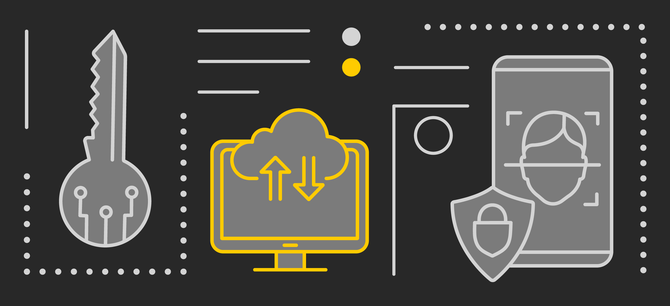services
Penetration testing, also known as pen testing, is a simulated cyber-attack on a computer system, network, or web application to identify security vulnerabilities that could be exploited by malicious threat-actors. The aim of penetration testing is to evaluate the security of a system by attempting to exploit its weaknesses and to determine the effectiveness of the security controls that have been implemented.
Penetration testing involves a variety of techniques, such as vulnerability scanning, network mapping, social engineering, and password cracking, to simulate real-world attacks. BeeSec’s projects typically involve four stages: Scoping, Testing, Reporting and Debrief.
Scoping aims to capture your requirements to ensure appropriate threats can be determined using threat intelligence techniques, at this stage threat actors will be discussed as well as where the perceived threats to the system are likely to originate.
Testing aims to identify and exploit weaknesses within the environment or system from the agreed threat profiles.
After the test is complete, a report is provided to detail the vulnerabilities that were discovered, the risk they pose to the system, and recommendations for remediation.
Penetration testing forms an important part of a comprehensive security program and can help organisations identify and fix vulnerabilities before they can be exploited by attackers.
CORE SERVICES
External Infrastructure Testing:
External penetration testing is a type of pen testing that focuses on evaluating the security of an organisation's external-facing systems, such as web applications, network devices, and servers, that are accessible from the internet. The purpose of external penetration testing is to identify vulnerabilities that could be exploited by attackers to gain unauthorized access to the organisation's network and data.


Internal Infrastructure Testing:
Internal infrastructure testing is a type of penetration testing that evaluates the security of an organisation's internal network, systems, and devices. The purpose of internal infrastructure testing is to identify vulnerabilities that could be exploited by attackers who have gained access to the organisation's internal network, such as through a phishing attack or malware infection, or who are already inside your organisation employed legitimately.
Web Applications Testing:
Web application testing uses bespoke web-based attack vectors to assess the security of an organisation's web applications, such as e-commerce sites, customer portals, and online banking platforms. The purpose of web application testing is to identify vulnerabilities that could be exploited by attackers to gain unauthorized access to sensitive data or to manipulate the application's functionality.


Cloud Penetration Testing:
Cloud penetration testing focuses on evaluating the security of an organisation's cloud-based infrastructure, such as virtual machines, databases, and web applications hosted on cloud platforms like AWS, Azure, and Google Cloud Platform. The purpose of cloud penetration testing is to identify vulnerabilities that could be exploited by attackers to gain unauthorized access to the organisation's cloud resources and data.
Vulnerability Management:
BeeSec has a unique approach to vulnerability management, this type of service should not just encompass the results of a vulnerability scan but should be a centralised platform to catalogue all of the risks identified across your testing regime. From complex penetration testing results which can be centrally viewed to understand when and where the risks are being identified. BeeSec uses this data source to drive analytics which let you understand where best to focus your security budgets. This service works best when customers have direct access to penetration testers allowing conversations around remediations happen in real-time, meaning you can trial remediations and receive confirmation and validation on the effectiveness of the solution.


Red Teaming:
Seen as the pinnacle of offensive security Red teaming aims to compromise an organisations critical assets or information, without being detected by the defensive blue team in their own backyard, by using threat intelligence gathered from internet sources including the dark web. Our service will uncover the skeletons in the closet and demonstrate how they can be leveraged to achieve the goals of the red team. Often mis-sold by competitors to organisations whose maturity levels are not ready for a complex scenario based engagement at BeeSec we use a consultative approach to ensure that when requesting a red team engagement, you are in the best position to benefit from it. These tests are more expensive than the standard suite of penetration tests and therefore it is important that clients are mature enough to benefit from the nuances in testing and reporting and have the correct information to make informed purchases. This type of testing best suits organisations who have had multiple rounds of penetration testing previously and are findings that the teams are struggling to compromise their environment by standard techniques, additionally organisations should at a minimum have some level of monitoring and detection in place.
OTHER SERVICES
Mobile Applications Testing: Assessing the security of mobile applications on various platforms such as iOS and Android.
Social Engineering: Using psychological manipulation techniques to exploit human behaviour and gain unauthorized access to systems.
Source Code Review: Analysing the source code of an application or software to identify vulnerabilities and weaknesses.
Web Services Testing: Evaluating the security of web services and APIs, such as SOAP or REST.
Wireless Networks Testing: Assessing the security of wireless networks, including Wi-Fi and Bluetooth.
Stolen Asset Testing/Build Review: Testing the security of stolen or lost devices and reviewing the build process for vulnerabilities.
Firewall Ruleset Review: Analysing firewall rulesets to identify potential security gaps or misconfigurations.
Thick Client Applications Testing: Assessing the security of desktop applications that are installed on client machines.



